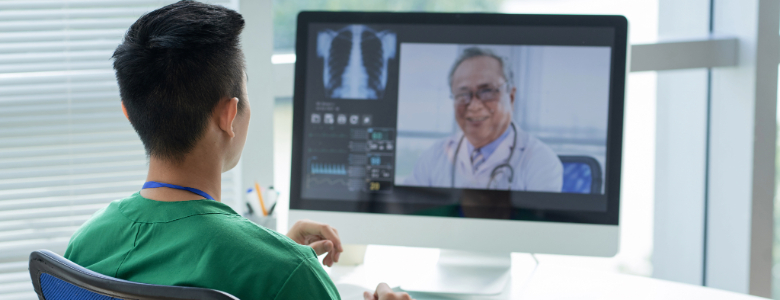Telemedicine has come a long way since its invention in the 1960s where it was first used by National Aeronautics and Space Administration (NASA) to monitor the physiological parameters of astronauts in space. Today, it uses telecommunication technologies such as teleconferencing and mobile technology to improve and provide healthcare to remote patients. Doctors connect to their patients through e-mails, webcam, and phones.
Telemedicine has even become better with the invention of Augmedix, a service provided by Google Glass Technology, which allows doctors to access a patient’s medical history instantly. It does this by recording and embedding a patient’s records for future references. This makes it possible for doctors to access a patient’s medical history before treatment via telemedicine. Telemedicine solution providers have proven themselves to save patients’ lives in a number of ways. Here are just a few of those ways:
1. Minimizing delay in care
Chronic diseases like cardiovascular disease, which constantly reoccur, are treated on time thereby reducing fatalities. A patient with this kind of disease might die while waiting in a queue in the hospital for treatment. With telemedicine, all one needs is an Internet connection to access treatment remotely. We do not have the power to know when these diseases strike. Therefore, telemedicine allows us to remain prepared for emergencies at anytime. Drones carrying first-aid kids, for example, have been utilized in telemedicine support plans to ensure that patients receive the care they need. Drones with necessary medical supplies are sent to places with emergency incidents through GPS tracking via mobile technology. Cameras in the drones allows doctors to monitor the situation and give instructions on what is to done on the patient.
2. Monitoring patients in the Intensive Care Unit (ICU)
The intensive care unit has the highest mortality rate in any hospital. In the US, 500,000 people admitted to the ICU die annually. In this unit of the hospital, medical errors are likely to occur due to complexity of some treatments. Patients admitted here are prone to an adverse outcome. Doctors attending to one patient may miss out on attending to another patient who requires more immediate attention. A form of telemedicine known as Tele-ICU offers additional surveillance and support. It uses high-resolution cameras and sophisticated alarm systems to deliver timely care to all ICU patients. This method has reduced mortality rates in a number of hospital units.
3. Home-monitoring
Advancements in technology has allowed telemedicine to monitor elderly patients and people with chronic diseases such as diabetes. As much as it minimizes delay in treatment, it also extends this service by constantly monitoring these patients at home. Patients with heart problems require constant monitoring because they are at a risk of adverse outcome. Data collected from these surveillance systems alert the doctors when there is need for emergency treatment. Patients are also given devices to monitor their blood pressure, heart rate, and sugar level, thus enabling doctors to monitor chronic conditions at their places of residence.
4. Real-time second opinions
Most hospitals in rural areas suffer from insufficient staffs and medical equipment. A hospital may employ one or many cardiologists, neurologists, and radiologists. This team of specialists may not be enough to serve many patients in need of their immediate attention in a single day. Telemedicine steps in to enable the transfer of medical images in remote hospitals for diagnosis in other well-equipped hospitals. It also enables healthcare centers to form networks whereby doctors can share their expertise with other healthcare centers. Both the patient and rural medical practitioner feel more confident if their medical opinion is validated by another medical practitioner, maximizing the chances of a correct diagnosis.
5. Minimization of hospital costs
The cost of admission to a hospital is expensive and, at times, unnecessary. A study in the US shows that over one billion dollars are spent on unnecessary hospitalizations annually. Telemedicine allows this money to be used in other areas like purchasing medication. Research also shows that people who are not hospitalized adhere to their treatment and get cured faster. Patients have a stronger relationship with their doctors thereby empowering them to manage their conditions. Some common conditions treated with telemedicine include: bronchitis, cold & flu, diarrhea, sinus conditions, and urinary tract infection. Telemedicine is convenient to many people, including those who can’t take time off work and mothers unable to see doctors because of their young children.

